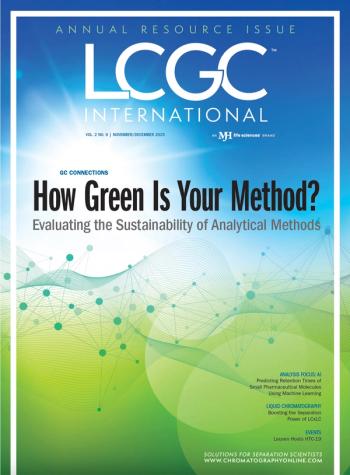
- LCGC Europe-06-01-2006
- Volume 19
- Issue 6
Infotrieve gains academic support
Infotrieve has announced that the University of Pittsburgh School of Medicine and Acacia Research's CombiMatrix Molecular Diagnostics (CMD) group have each adopted the company's electronic laboratory notebook (ELN). This software solution is said to be the first enterprise-wide ELN to receive the full endorsement of the collaborative electronic notebook systems association (CENSA).
Infotrieve has announced that the University of Pittsburgh School of Medicine and Acacia Research's CombiMatrix Molecular Diagnostics (CMD) group have each adopted the company's electronic laboratory notebook (ELN). This software solution is said to be the first enterprise-wide ELN to receive the full endorsement of the collaborative electronic notebook systems association (CENSA).
The University of Pittsburgh School of Medicine houses one of nine national institutes of health (NIH)-funded molecular libraries screening centres and will be using the electronic notebook for the high-throughput screening of small molecules. Each of the institutions are a part of a scheme in which they will receive funding for three years to develop a collaborative research network that will require the use of high-tech screening methods to identify small molecules that can be used as research tools.
Within the Acacia Research Corporation's CMD group the software will be used in the development of a platform technology to produce customizable arrays as semiconductor-based tools for use in identifying and determining the role of genes, gene mutations and proteins. The aim of this investment is to eliminate paper record keeping and replace it with electronic data storage.
For more information visit Infotrieve's website at
OEM cooperation
DataApex and Knauer have announced the signature of an OEM software agreement. Under the terms of the agreement an OEM version of DataApex's Clarity chromatography software will be marketed by Knauer as ClarityChrom.
This chromatography software will replace Knauer's EuroChrom software package. By replacing the outdated software the company will be able to offer its customers a choice between the high-end ChromGate chromatography data system and the more cost effective ClarityChrom. The first release of the ClarityChrom software has been planned to occur in the second half of 2006 with all of Knauer's Smartline instruments for analytical HPLC being supported. Other instruments for preparative HPLC and the company's WellChrom series will be supported in a second release.
This cooperation is an addition to DataApex's portfolio, which already has five chromatography instrument manufacturers privately reselling labelled versions of its software. This current version of Clarity is the third generation of the company's chromatography software.
For more information visit the companies' websites at
All cash acquisition
Millipore has announced it will acquire Serologicals in an all cash transaction. The boards of directors have approved a definitive agreement on the acquisition, which is predicted to transform Millipore into a company with combined annual revenues of approximately $1.4 billion.
The combination of companies is expected to strengthen Millipore's bioscience division through a broad range of high growth segments while also increasing sales of Serologicals' products in international markets. Additionally, Millipore's bioprocess division will gain a cell culture supplements offering that will ease its entry into the upstream bioprocessing market.
Overall, the combined organization will provide expanded R&D capabilities and have a worldwide sales, sales support and service organization of approximately 1200 professionals selling a broad range of products.
For more information visit the companies' websites at
Articles in this issue
over 19 years ago
New Technologiesover 19 years ago
The Thermal Conductivity Detectorover 19 years ago
Dwell Volume RevisitedNewsletter
Join the global community of analytical scientists who trust LCGC for insights on the latest techniques, trends, and expert solutions in chromatography.



